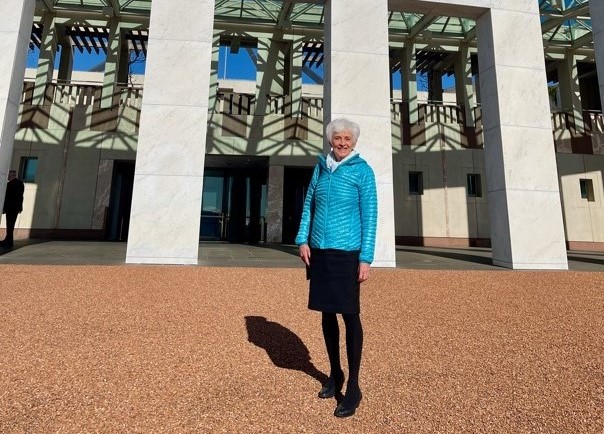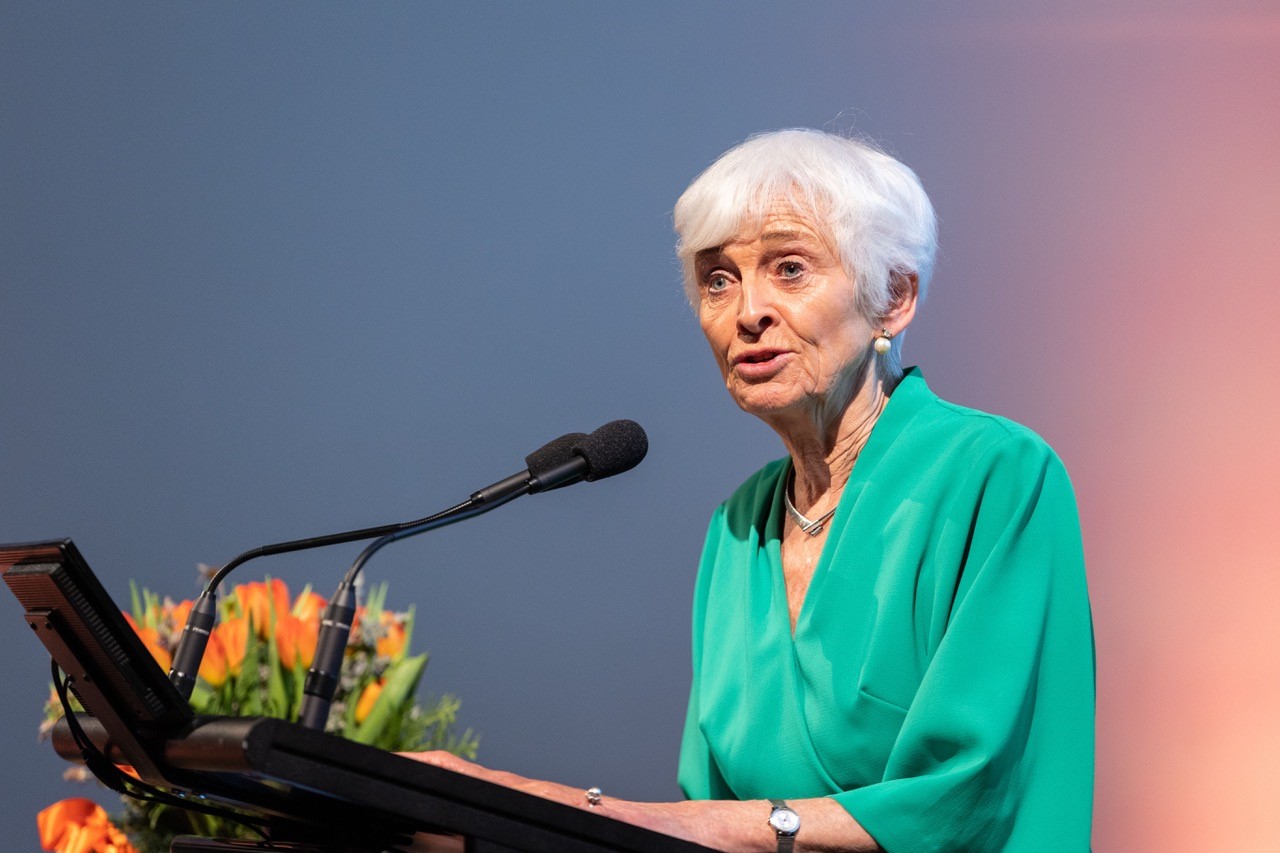Australia Part 3: Government Roles, Circular Procurement and Recycling
August 02, 2022
In the third episode of Jacqueline Cramer’s blog reporting from Australia, she shares the maturity level and focus areas of the Australian circular economy progress. Recycling, waste management, and circular procurement are being implemented, much accelerated by governmental waste export bans resulting in packed landfills. Higher value levels of the circular economy are only in discussion for the future yet, but Cramer reports strong interest in network governance and a continuation of Australian-Dutch collaboration in this field.
If you missed out on the last issue, read it here:

"They value the work on circular economy already completed by the Netherlands and expressed the wish to continue cooperation with Dutch companies and our government."
Jacqueline Cramer
Newly elected Federal Government with strong Circular Economy interest
The days here in Australia fly by. It is such a privilege to be accompanied throughout my trip by Dr. Nicole Garofano of the Australian Circular Economy Hub/Planet Ark, Professor Usha Iyer-Raniga of RMIT, and the Dutch Embassy (particularly Dr. Dai Forterre). They jointly organized all the meetings so extremely well that the output of my visit is beyond my expectations. They will also make sure that there is a follow-up of the events and that we can draft an action plan together at the end of my trip. I’ll come back to that at the end of August.
The 18th – 25th of July was mainly dedicated to the role of government at the state and federal (Commonwealth) levels. I spent a week in the capital of Australia, Canberra, and am now in Sydney, the capital of New South Wales. The federal administration, Parliament House, and most other federal agencies are located in Canberra (in between Melbourne and Sydney). The recently elected federal government just started its term, which means that the policies are still in the making. However, relying on the great interest in circular economy expressed by the senior advisor for the federal Minister of Industry, combined with interest from the Department of Climate Change, Energy, the Environment and Water, the federal government might soon embark on the journey as well.

Picture: In the entrance hall of the Department of Climate Change, Energy, the Environment and Water, Australian Government, Canberra.
Focus on progress in Recycling and Circular Procurement
Canberra is located in the State Australian Capital Territory (ACT), in size a small territory, but forward-looking when it comes to sustainability. I visited the ACT Minister for Transport and City Services, Mr. Chris Steel MLA, who also has waste collection and recycling in his portfolio, and ACT Minister of Climate Change and Sustainability, Sean Rattenbury MLA together with Mrs. Rebecca Vassarotti MLA, Minister for the Environment, Minister for Heritage and Minister for Sustainable Building and Construction.
All Ministers were very interested in our Circular Economy policies and implementation strategies. They were informed about the need for network governance, complementary to public governance, and asked me how this works and what they can learn from it. They value the work on circular economy already completed by the Netherlands and expressed the wish to continue cooperation with Dutch companies and our government.
Their own policies particularly aim to reduce the amount of waste going to landfills and increase resource recovery to over 90% by 2025. At present, they recycle several waste streams, e.g plastic, aluminum, glass, paper and cardboard, electronic equipment, and tires. They are preparing policies on circular economy and aim to expand the scope to include higher steps on the 10R ladder of circularity. We held a cross-government workshop on circular procurement with valuable feedback from the 30 civil servants who participated mainly remotely.
The state of Victoria, which I visited before has similar ambitions as the ACT. Their recent policy document ‘Recycling Victoria’ pays significant attention to waste separation and collection, awareness raising, logistics, and recycling, but also focuses on product stewardship, particularly on Extended Producer Responsibility and Circular Procurement. They are also developing a circular economy measuring framework to monitor progress. The willingness to accelerate the introduction of circular procurement was clearly visible, also during a cross-government workshop which was attended in person by about 20 civil servants. After a lecture on my side about the Dutch experiences in implementing circular procurement, the group discussed what they could do themselves and how they could start the process. This was an inspiring event.
The state of New South Wales, which I visited on July 25, follows a similar pathway. Their focus is on the Waste and Sustainable Materials strategy, including circular procurement. State Minister for Environment and Heritage, Mr. James Griffin, was interested in enhancing circular economy and sharing experiences with the Netherlands. He just started as a Minister three months ago and will soon issue the first documents. Here too a similar cross-government workshop was held in which I shared the Dutch experiences with the audience, followed by a workshop (see picture below).
Photo: Jacqueline Cramer sharing Dutch experiences in circular development
National Waste Export Bans accelerate CE development
Overall, my conclusion is that the interest in the circular economy within government at the state and federal levels is rapidly growing. The main drivers are regulations on the export of waste by the Australian government, with bans on a range of products now in place, and the fact that landfills are filling up, particularly in bigger cities. All three states I visited are interested in moving to high-value recycling of a growing number of resource streams together with industry and local governments and implementing circular procurement using the Dutch experiences as a source of inspiration. By increasing the landfill levy, it is hoped to act as a deterrent to disposal while stimulating recycling. To support recycling activities the previous Federal government introduced the recycling modernization fund in 2020. This funding was matched by State governments and by industry. The private sector responded to the call for proposals, applying for financial support to set up, among other projects, recycling sites. Whether this creates high-value recycling and reuse or downcycling, was not a criterion of the fund requirements at the time. Initiatives higher on the ladder of circularity currently being prepared mainly focus on circular procurement by the State governments themselves.
The national Product Stewardship Act, which was updated in 2020, assists in promoting circular economy. Product stewardship schemes can operate as voluntary, mandatory, or shared with industry under a co-regulatory structure. The National Product Stewardship Investment Fund has provided financial support to set up new product stewardship arrangements or improve existing ones. It also funded the launch of the Product Stewardship Centre of Excellence. The States are responsible for organizing container deposit schemes as an example of product stewardship. However, as the Federal government has set targets for waste management and not (yet) for steps higher on the ladder of circularity – just as in the Netherlands – product stewardship schemes are mainly geared to meet the waste management targets.
Next time, I’ll share my experiences on business initiatives, both at the regional level and in industrial sectors (particularly the building- and textile sectors). As you can read, it is a fascinating visit here in Australia.
